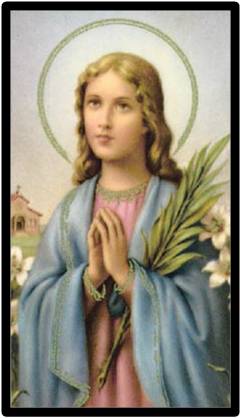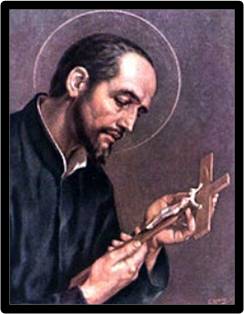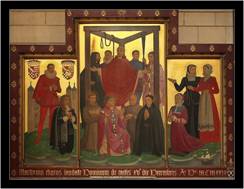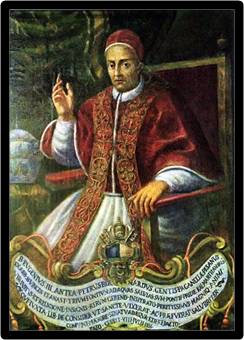
Maria was born at Corinaldo, Ancona in Italy into a poor but loving home and was one of six children. She was baptized the day after she was born. Her father Luigi Goretti was a farmer. Her mother Assunta, was a poor orphan girl who did not know how to read or write. Luigi and Assunta loved God, Mother Mary and each other.
Their oldest child, a boy died when he was just a baby. Although they were very poor, and life was difficult, Luigi and Assunta thanked God for His great gifts. Assunta lovingly taught her children about God’s great love, by her words and actions.
The children had no toys, so a rock or an apple was used as a ball to play with. Maria never had a single doll and they could not afford to go to school, but they were a very happy family that lived in the light of God’s grace.
When Maria was six, she played like other children, running through the grass, picking flowers, laughing and smiling. But instead of playing with her friends, Maria played more often with her younger brothers and sister, and kept them happy so they would not trouble their mother.
Then the family moved to the Pontine Marshes where Luigi, along with his partner Mr. Serenelli and his sixteen year old son Allessandro (Alexander), lived together on Conte Mazzoleni’s farm as tenant farmers.
By the time she was nine, Maria did the family marketing. She always did her errands quickly and returned home where she was needed. She was a friendly girl and everyone loved her. A cheerful grocer Giovanni, gave Maria an apple one day, after she had finished paying for her groceries. But Maria did not eat it.
Instead, she thanked Giovanni and put it in her pocket saying that her brother Allesandrino loved apples. Then he gave her a cookie, which again she put in her pocket saying that she would give it to her little sister Ersilia. Giovanni finally gave her another cookie and said he would be very hurt if she didn’t eat it herself. So Maria not wanting to offend him, ate it.
A short time later, Mr. Luigi fell very ill and died, leaving Assunta to bring up her five children alone. At twelve, Maria was already very pretty. She helped her mother on the farm, in the house and with the care of the other children. She never complained because they were so poor. In fact, she cheered up her poor mother and was a great comfort to her.
She went to Mass every day even though it meant a two-hour walk. Maria received the sacrament of Reconciliation as often as she could. When she came home, she taught the children their prayers and told them Bible stories. Alexander who often joined the family for the rosary slowly began to notice how pretty Maria was.
He tried a few times to touch her and make Maria sin. She absolutely refused and did her best to avoid him. July 5, 1902, was a hot summer day. Maria was alone in the cottage mending clothes while her mother worked on the farm and Mr. Serenelli slept under a tree.
Alexander asked Maria to come to him, and when she refused, he dragged her into a room. Maria begged him not to touch her, repeating over and over that God did not want this, it was a sin and he would go to hell. When she struggled and tried to scream, he stuffed a handkerchief into her mouth and angrily stabbed her many times with a dagger and then ran away.
When they found her, Maria was quickly taken to a hospital but she died about twenty-four hours later. During her last hours she received Jesus in Holy Communion with great joy. She then told the priest that she forgave Alexander with all her heart, for the love of Jesus and hoped God would forgive him too.
Her only worry was for her mother. Alexander was sent to prison for thirty years. For a long time, he did not feel sorry for what he had done. Then one night Maria appeared to him in a dream, walking in a garden and offering him a bunch of Lilies. She said, she hoped he would come to heaven one day. From that moment on, he was a changed man.
He wrote a letter to the bishop, begging God’s forgiveness for the great sin he had committed. When he was freed from prison after twenty-seven years, his first visit was to the Goretti home where he asked Maria’s mother for forgiveness. Then Alexander spent the rest of his life as the gardener in a nearby monastery.
On April 27, 1947, Pope Pius XII appeared on the balcony of St. Peter’s Basilica with Maria’s eighty-two-year-old mother, Assunta and declared Maria “blessed”.
Three years later, in a grand ceremony that had to be held outside the Basilica because the crowds were so huge, Maria was declared a saint. It was the only time that a parent was present to witness their child’s cannonization. The pope called her “a martyr of holy purity.”




